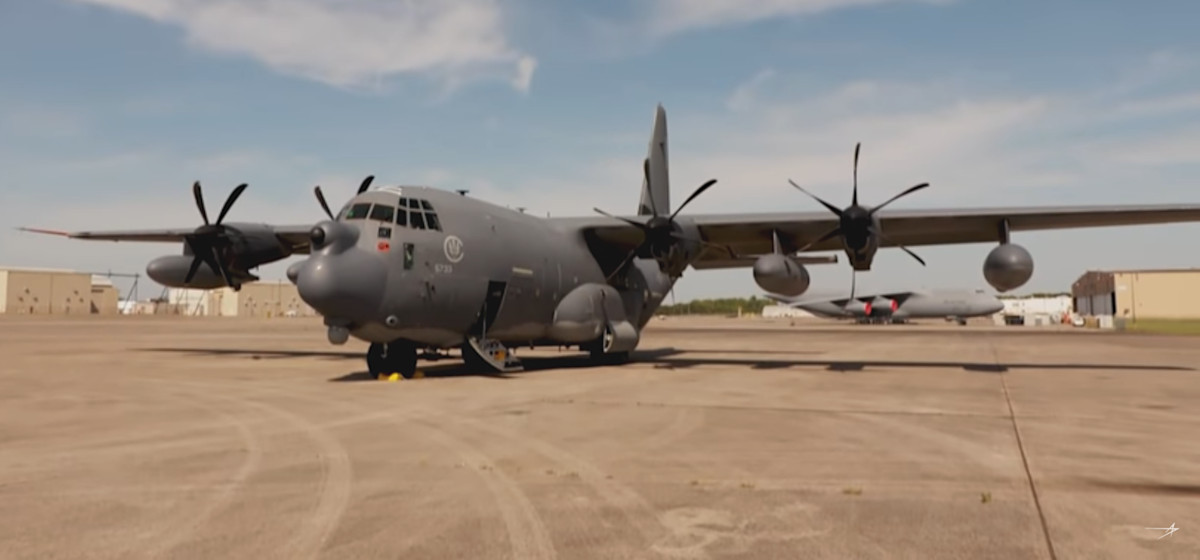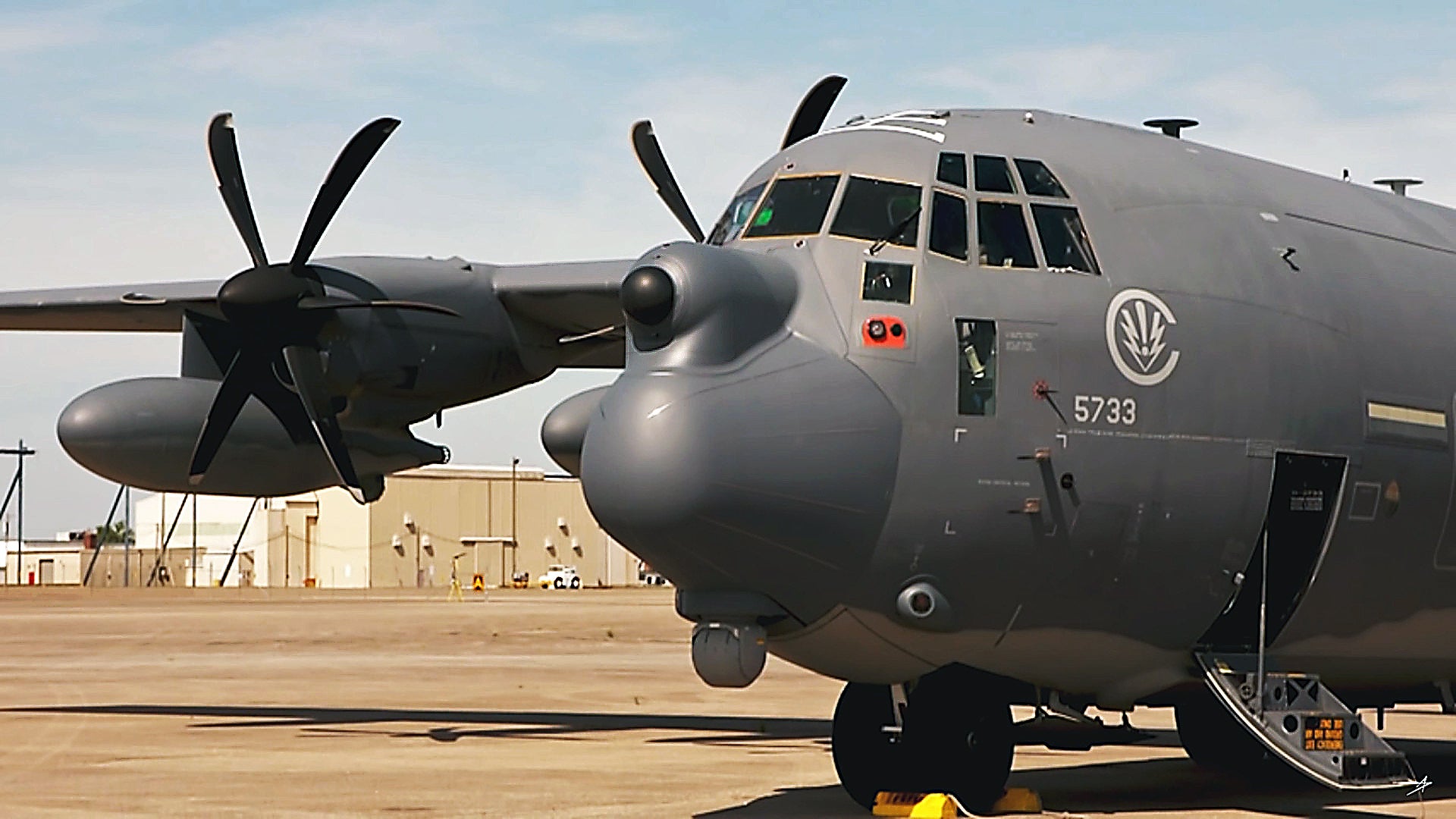Lockheed Martin has released a video showing one of the first MC-130J Commando II special operations transports equipped with the Raytheon AN/APQ-187 Silent Knight terrain-following/terrain avoidance radar. The U.S. Air Force plans to upgrade the entire Commando II fleet to this new configuration in the coming years, giving the planes a nap-of-the-earth flight capability that is essential for performing their special operations missions, but which they have lacked since their introduction nearly a decade ago.
By the end of 2018, the Air Force had at least two MC-130Js equipped with the Silent Knight Radar, or SKR, according to Pentagon budget documents. In its most recent budget request for the 2020 Fiscal Year, U.S. Special Operations Command (SOCOM), which is in charge of procuring SKRs for Air Force Special Operations Command, asked for almost $9 million for the purchase of two radars, associated equipment, and support services. AFSOC expects to eventually receive more than 70 Commando IIs, all of which are set to receive the new radar.
“The program will not just integrate that new radar, but will also evolve the [MC-130J’s] digital cockpit to automate essential functions,” Paul Keith, Lockheed Martin’s Program Manager for the MC-130J Common Terrain Following/Terrain Avoidance Radar (MCTF) program, said in the new video. “This will allow a smaller AFSOC crew to do as much or even more than current crews can do.”

SKR is an impressive multi-function radar in its own right, with terrain-following/terrain avoidance, weather, and ground mapping modes. It works over any terrain, including sand, ice, and snow, as well as in maritime environments. SOCOM’s requirements called for it to work at altitudes from 100 to 1,000 feet in level or turning flight and at speeds from 5 to 300 knots, or between 6 and 345 miles per hour.

The radar operates on K-band and has low probability of intercept (LPI) and low probability of detection (LPD) features. This is an important consideration for special operations missions that often involve penetrating into denied areas. If the enemy detected the radar passively in or near their airspace it could give away the MC-130J’s presence and compromise its mission and its survivability. The terrain-follow and terrain avoidance capability in of itself helps enable extremely low nap-of-the-earth flight profiles, including in poor weather and at night, to help evade and avoid hostile air defenses.
SOCOM initially began the SKR program in the late 2000s primarily to develop a new terrain-following/terrain avoidance radar for the special operations MH-47 Chinooks and MH-60 Black Hawks assigned to the Army’s elite 160th Special Operations Aviation Regiment. Since then, however, the effort has evolved, with plans now for the radar to become a common system for those helicopters, as well as the Air Force’s special operations CV-22B Osprey tilt-rotors and the MC-130J.

Silent Knight offers significant benefits for each one of these platforms, but is a particularly essential development for the Commando II. AFSOC’s MC-130 fleets as a whole, which also includes the MC-130H Combat Talon II, are facing increasing challenges as ever-improving threat air defense capabilities continue to emerge and proliferate around the world.
For decades now, AFSOC and other components of the Air Force have been investigating a wide array of potentially more survivable replacement options, including stealth transport aircraft, as well as myriad upgrades to ensure the MC-130 platform remains relevant in the coming years. The War Zone recently completed a large two-part feature on these developments, which you can find here and here.
In the meantime, terrain-following and terrain avoidance capabilities and nap-of-the-earth flight profiles remain critical to the ability of MC-130s to complete their missions. So, shockingly, the Air Force took delivery of the first MC-130Js in 2011, and put the first examples into operational service the next year, without any such capability. After nearly a decade, with the exception of the examples now carrying the SKR, the Commando II fleet still lacks the kind of functionality found on the older MC-130H.

“Concerning the MC-130H Combat Talon II, these would remain in service longer, the first retirements not planned until FY15 (two), with another three in FY19,” according to an official AFSOC history for the 2013 calendar year, which the author previously obtained via the Freedom of Information Act. “The main reason for retaining the H models longer centered on their capabilities, specifically terrain following radar and self-protection features.”
It’s worth noting that the MC-130J has already replaced the MC-130P Combat Shadow, which served primarily as a special operations tanker for helicopters such as the 160th’s MH-47s and MH-60s, rather than as a platform to deeply penetrate into denied areas to insert, extract, or resupply special operations forces. This helps explain why the Air Force had originally named the J model as the Combat Shadow II, before renaming it the Commando II. You can find the full story behind the MC-130J’s name here. In Lockheed Martin’s new video, they refer to the SKR-equipped aircraft as Combat Talon IIIs, a moniker the Air Force officially rejected, but which may become an informal name for the aircraft, something that often happens with U.S. military aircraft.
Whatever the case, AFSOC only formalized requirements to add a terrain-following/terrain avoidance radar to the MC-130J in 2012 and installed a prototype system on one aircraft, serial number 09-5713, the following year. This was an update to Northrop Grumman’s AN/APN-241 multi-function radar, a design first introduced in the 1990s that is found on standard C-130J Hercules airlifters.

Northrop Grumman and Israel’s Elbit systems developed the update, which is now part of the standard AN/APN-241 package and offers a certain level of terrain-following/terrain avoidance capability. However, the modified radar turned out to be unsuitable for highly demanding low-level special operations missions.
“The committee understands that during contractor flight tests of the APN-241 modified for terrain following, operators and testers deemed the APN-241 unsafe and ineffective for Terrain Following/Terrain Avoidance (TF/TA) flight, and that any modification to the current APN-241 would require extensive redesign and result in a new radar system,” a report from the House Armed Services Committee in 2015 explained. “As such, the committee supports the USSOCOM Commander’s decision to accelerate transition to the AN/APQ-187 Silent Knight Radar program.”
It is important to note that the AN/APQ-187 won’t replace the AN/APN-241 on the Commando II. “Unknowns consisted or potential radar signal interference, system integration, and mounting/weight unknowns,” AFSOC had already warned with regards to this dual radar configuration in 2013. We don’t know what measures Lockheed Martin or Raytheon may have taken to mitigate these concerns or what limitations this might impose on the SKR’s functionality.

Regardless, it’s clear that the SKR is far better suited to the MC-130J’s special operations mission than the existing AN/APN-241. Hopefully, with SOCOM having now transitioned from development to actually procuring conversion kits, it will not be long before the entire existing Commando II fleet receives their new distinctive noses.
Until they get this desperately needed terrain-following/terrain avoidance capability, the MC-130Js will remain limited in the kinds of missions they can perform and where and when they can perform them.
Contact the author: jtrevithickpr@gmail.com
